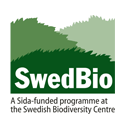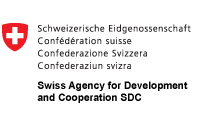Click on images to enlarge
/thumbs/broussonetia_papyrifera-leaves01_sml.jpg)
Broussonetia papyrifera leaves (Photo: Didier Descouens, CC-BY-SA)
/thumbs/broussonetia_papyrifera_jm06_sml.jpg)
Broussonetia papyrifera leaves (Photo: John Mauremootoo, CC-BY-NC)
/thumbs/broussonetia_papyrifera_jm02_sml.jpg)
Broussonetia papyrifera immature fruit (Photo: John Mauremootoo, CC-BY-NC)
/thumbs/broussonetia_papyrifera_jm03_sml.jpg)
Broussonetia papyrifera immature and mature fruits (Photo: John Mauremootoo, CC-BY-NC)
/thumbs/broussonetia_papyrifera_jm01_sml.jpg)
Broussonetia papyrifera in maize field (Photo: John Mauremootoo, CC-BY-NC)
/thumbs/broussonetia_papyrifera_jm04_sml.jpg)
Broussonetia papyrifera in forest gap (Photo: John Mauremootoo, CC-BY-NC)
/thumbs/broussonetia_papyrifera_jm05_sml.jpg)
Broussonetia papyrifera seedlings in forest (Photo: John Mauremootoo, CC-BY-NC)
/thumbs/broussonetia_papyrifera_gwh01__sml.jpg)
Young Broussonetia papyrifera plants invading forest edge (Photo: Geoffrey Howard, IUCN)
Scientific name
Broussonetia papyrifera (L.) Vent.
Synonyms
Morus papyrifera (L.); Papyrius papyriferus (L.) Kuntze
Common names
Paper mulberry, pulp mulberry
Family
Moraceae
Origin
East Asia
Naturalised distribution (global)
Locations within which Broussonetia papyrifera is naturalised include Latin America, the United States, south and west Asia and Africa.
Introduced, naturalised or invasive in East Africa
Broussonetia papyrifera is invasive in parts of Uganda (Haysom and Murphy 2003, Lyons and Miller 1999), naturalised in Tanzania (Dawson et al. 2008) and has been introduced to Kenya (A.B.R. Witt Pers. Obs.).
Habitat
Forest edges and gaps, roadsides. Broussonetia papyrifera grows very aggressively in degraded forests as it thrives in open areas.
Description
Broussonetia papyrifera is a deciduous tree growing up to 15 metres tall, sometimes higher in ideal conditions.
The leaves are variable in shape (even on the same branch), unlobed egg-shaped with broad end at base (ovate), cordate (heart-shaped) to deeply lobed, with lobed leaves more frequent on fast-growing young plants. The leaves they are 7-20 cm long, with a rough surface above, fuzzy-downy below and a finely serrated margin.
The male (staminate) flowers are produced in an oblong inflorescence, and the female (pistillate) flowers in a globular inflorescence. The pistillate flower matures into a red to orange fruit 3-4 cm diameter, which is an important food for wild animals in its native range.
Reproduction and dispersal
Broussonetia papyrifera is insect- and wind-pollinated, and is dispersed by birds, bats and mammals.
Economic and other uses
The bark is composed of very strong fibres, and can be used for making high-quality paper (hence the common name of paper or pulp mulberry). However, attempts to commercialise this tree in Ghana have been unsuccessful. The tender leaves and twigs can be used to feed deer, and the tree is sometimes nicknamed the "deer's tree". The wood can also be used as timber. It has been planted as a forest boundary-marker species which is sometimes the origin of escape and invasion of non-forested areas. The paper mulberry tree was brought to the Pacific during the Polynesian migrations, and its bark is widely used to make cloth (Cheng et al.2001).
Environmental and other impacts
The fast growing Broussonetia papyrifera, when introduced to non-native areas, can quickly disrupt the native habitat, especially on forest edges and in canopy gaps, becoming a highly invasive species and upsetting the natural ecosystem. B. papyrifera chokes out native flora because of its very high consumption of water, which leaves less water to sustain the native flora and because of direct competition for nutrients, space and light. Because its root system, while extensive, is shallow, it is also prone to being blown down by high winds (Duke and Ayensu 1985). When cut, the trees release a latex heavy sap (characteristic of Moraceae) which is extremely sticky and can ruin clothing. It is responsible for one of the highest pollen counts in the world in Islamabad, Pakistan, which causes serious allergies resulting in deaths every year. It is also invading the Himalayas (A.B.R. Witt per. com.) It impacts upon farmers practicing slash and burn agriculture in Ghana and elsewhere and requires a great deal of maintenance from farmers.
Management
The precise management measures adopted for any plant invasion will depend upon factors such as the terrain, the cost and availability of labour, the severity of the infestation and the presence of other invasive species. Some components of an integrated management approach are introduced below.
The best form of invasive species management is prevention. If prevention is no longer possible, it is best to treat the weed infestations when they are small to prevent them from establishing (early detection and rapid response). Controlling the weed before it seeds will reduce future problems. Control is generally best applied to the least infested areas before dense infestations are tackled. Consistent follow-up work is required for sustainable management.
Small plants can be uprooted but it is important to remove the roots completely as Broussonetia papyrifera reproduces vegetatively from the roots. Large trees can be cut and herbicide applied to the cut stump. If herbicide is not applied then the plant will coppice profusely. If cut close to the ground without applying herbicide, the root system will send out multiple coppices which grow quickly from the existing root system.
Ring barking can work if it is done close to ground level but not if the trees have extensive buttresses. Frilling (making deep cuts at regular intervals around the base of the tree and applying herbicide into the cuts) has been very extremely effective. However, control of large infestations of mature trees is very labour-intensive.
Work done in Mabira and Budongo forests in Uganda has been shown that when the forest is not heavily degraded and has enough natural forest tree species in the seed bank, the best way to control B. papyrifera is either to leave the forest undisturbed or add more seedlings of emergent tree seedlings/ saplings in carefully opened small gaps to encourage the closing up of the forest thereby eliminating B. papyrifera as it can hardly regenerate in a shade. Around Sonso in Budongo forest, B. papyrifera has been controlled by the closing up forest, leaving it only along the road where it is open. In control of B. papyrifera clearing of the forest should be avoided as this encourages its aggressive regeneration.
Research on biological control options for this species has yet to be initiated.
Legislation
Not listed as a noxious weed by the state or governments in Kenya, Tanzania and Uganda.
References
CABI invasive species compendium online data sheet. Broussonetia papyrifera (paper mulberry). CABI Publishing 2011. www.cabi.org/ISC. Accessed March 2011.
Cheng, Z., Lin, C., Hwang, T. and Teng, C. (2001). Broussochalcone A, a potent antioxidant and effective suppressor of inducible nitric oxide synthase in lipopolysaccharide-activated macrophages. Biochem Pharmacol. 61(8):939-46.
Dawson, W., Mndolwa, A.S., Burslem, D.F.R.P. and Hulme, P.E. (2008). Assessing the risks of plant invasions arising from collections in tropical botanical gardens. Biodiversity and Conservation 17(8): 1979-1995.
Duke, J.A. and Ayensu, E.S. (1985). Medicinal Plants of China Reference Publications, Inc.
Haysom, K.A. and Murphy, S.T. (2003).The status of invasiveness of forest tree species outside their natural habitat: a global review and discussion paper. Forest Health and Biosecurity Working Paper FBS/3E. Forestry Department. FAO, Rome (unpublished). www.fao.org/docrep/006/j1583e/j1583e00.htm.
Lyons, E.E. and Miller, S.E. (eds) (1999). Invasive Species in Eastern Africa: Proceedings of a Workshop held at ICIPE, July 5-6, 1999.
Editors
Agnes Lusweti, National Museums of Kenya; Emily Wabuyele, National Museums of Kenya, Paul Ssegawa, Makerere University; John Mauremootoo, BioNET-INTERNATIONAL Secretariat - UK.
Acknowledgments
This fact sheet is adapted from The Environmental Weeds of Australia by Sheldon Navie and Steve Adkins, Centre for Biological Information Technology, University of Queensland. We recognise the support from the National Museums of Kenya, Tropical Pesticides Research Institute (TPRI) - Tanzania and Makerere University, Uganda. This activity was undertaken as part of the BioNET-EAFRINET UVIMA Project (Taxonomy for Development in East Africa).
Contact
BioNET-EAFRINET Regional Coordinator: [email protected]












